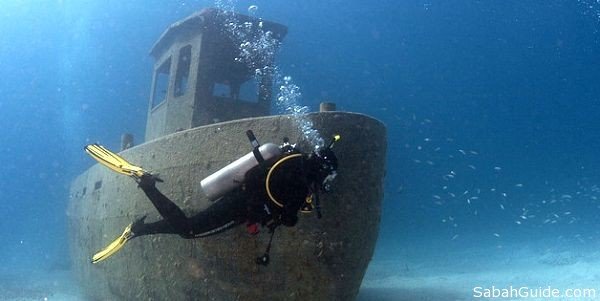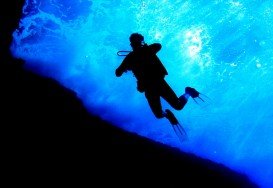
South Golden Arches Beach, Kailua Kona
Kailua Kona is located in the North Kona District, Hawaii. It is a lively seaside town with sunny tropical weather all year long and lies at the bottom of the Hualalai Volcano.
Home > WATER SPORTS > Scuba Diving > Usukan Bay, Kota Kinabalu
Usukan Bay offers a quality wreck diving experience. The bay comprises of 3 World War II Japanese wrecks which were all sunk on the same day in October 14th, 1944. These wrecks brought about 3 awesome wreck dive spots namely the “Usukan Wreck”, “The Rice-Bowl Wreck” and the “Upside-down Wreck”. Diving at these sites make a memorable experience and accommodates the advanced open water and technical diver with minimum qualifications and all dives are no-decompression.
All these wreck dives are located at 26-40 m/85-131 ft in depth below the sea level and have small to medium currents. This constitutes one more reason why experienced divers can attempt scuba diving here. The wrecks are characterized by both stunning hard and soft corals with abundant marine life. The minimum pax is 4 per dive and divers are advised to use Nitrox for underwater time extension.

Kailua Kona is located in the North Kona District, Hawaii. It is a lively seaside town with sunny tropical weather all year long and lies at the bottom of the Hualalai Volcano.
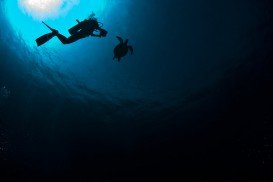
Clovelly is a beach-side suburb of Sydney, at about 8 km/4 mi in the south-east of Sydney's CBD (Central Business District).
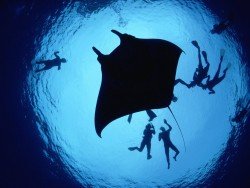
If there was ever a place, called underwater paradise on earth, it would be at the Raja Ampat Islands. Located on the northwest end of New Guinea Island in Indonesia, Raja Ampat is an archipelago with more than 1500 islands, coral reefs and sandbars, situated in the Coral Triangle and surrounded by the majestic Pacific Ocean.
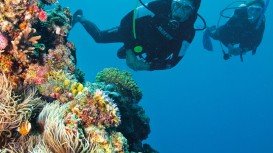
The Kangaroo Island covers an area of approximately 4400 km²/1698.8 mi², located at 110 km/70 mi south-west of Adelaide and easily accessible by ferry or plane. A congregation of attractive small towns and fascinating wild Conservation parks, Kangaroo Island represents Australia's third largest Island.
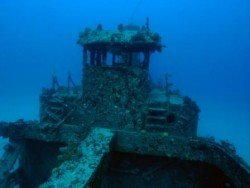
Hispaniola Island is located in the northern Caribbean Sea. It is standing on the western side of Puerto Rico and south-east of Cuba. Hispaniola is divided into 2 nations. Dominican Republic is located on the eastern side of the island and Haiti on the western side. The capital of Dominican Republic is Santo Domingo.
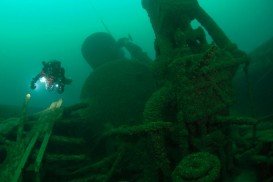
Lake Michigan, the second largest of the Great Lakes of North America by volume and the third largest by surface area, is actually the only one located entirely within the United States. Over the years, a large number of ships have sunk in the Straits of Mackinac, due to sudden and harsh storms. The Straits of Mackinac Underwater Preserve accommodates more than thirteen shipwrecks. One of them is the Minneapolis wreck.
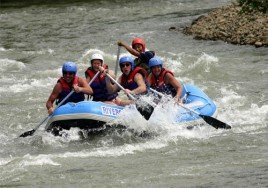
Famous due to its proximity with tropical islands, lush forests and Mount Kinabalu, Kota Kinabalu is the capital of the state of Sabah located in Borneo. It is located on the west coast of Sabah within the West coast Division. Formerly known as Jesselton, it enjoys a tropical rainforest climate and lies by the coast, overlooking at the South China Sea and bordered by the Crocker range which is home to Mount Kinabalu.
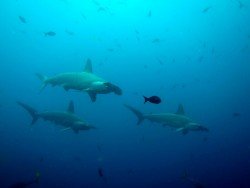
Pulau Tiga is located at 48 km/30 mi in the south of Kota Kinabalu and became well known due to the "Survivor" series, hosting the setting of "Survivor Borneo", the first American season of the show. Scuba diving in Pulau Tiga is open to all levels of divers and is a prime location for macro lovers and underwater photography. The spot is believed to have been formed by the eruption of several mud volcanoes and is at 100 m/328 ft above sea level.
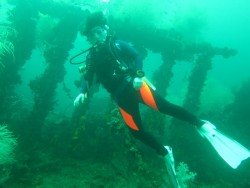
Famous for its proximity with the tropical islands, lush forests and Mount Kinabalu, Kota Kinabalu is the capital of the state of Sabah located in Borneo. It is located on the west coast of Sabah within the West coast Division. Formerly known as Jesselton, it enjoys a tropical rainforest climate and lies by the coast overlooking the South China Sea and bordered by the Crocker range which is home to Mount Kinabalu.
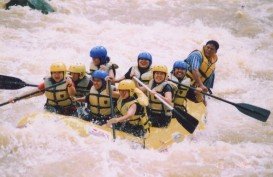
Famous due to its proximity with tropical islands, lush forests and Mount Kinabalu, Kota Kinabalu is the capital of the state of Sabah located in Borneo. It is located on the west coast of Sabah within the West coast Division. Formerly known as Jesselton, it enjoys a tropical rainforest climate and lies by the coast, overlooking at the South China Sea and bordered by the Crocker range which is home to Mount Kinabalu.
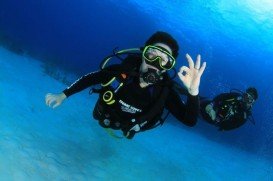
Pulau Tiga is located at 48 km/30 mi in the south of Kota Kinabalu and became well known due to the "Survivor" series, hosting the setting of "Survivor Borneo", the first American season of the show. Scuba diving in Pulau Tiga is open to all levels of divers and is a prime location for macro lovers and underwater photography. The spot is believed to have been formed by the eruption of several mud volcanoes and is at 100 m/328 ft above sea level.
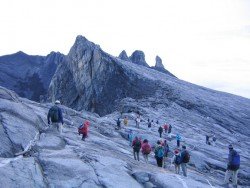
Famous for its proximity with tropical islands, lush forests and Mount Kinabalu, Kota Kinabalu is the capital of the state of Sabah located in Borneo. It is located on the west coast of Sabah within the West coast Division. Formerly known as Jesselton, it enjoys a tropical rainforest climate and lies by the coast, overlooking at the South China Sea and bordered by the Crocker range which is home to Mount Kinabalu.
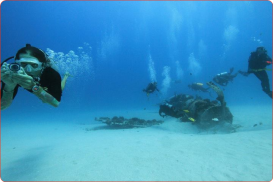
Famous for its proximity with the tropical islands, lush forests and Mount Kinabalu, Kota Kinabalu is the capital of the state of Sabah located in Borneo. It is located on the west coast of Sabah within the West coast Division. Formerly known as Jesselton, it enjoys a tropical rainforest climate and lies by the coast overlooking the South China Sea and bordered by the Crocker range which is home to Mount Kinabalu.
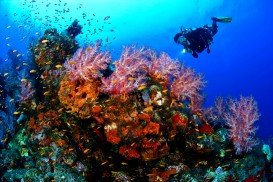
Pulau Tiga is located at 48 km/29.9 mi in the south of Kota Kinabalu and became well known due to the "Survivor" series, hosting the setting of "Survivor Borneo", the first American season of the show. Scuba diving in Pulau Tiga is open to all levels of divers and is a prime location for macro lovers and underwater photography. The spot is believed to have been formed by the eruption of several mud volcanoes and is at 100 m/328 ft above sea level.

